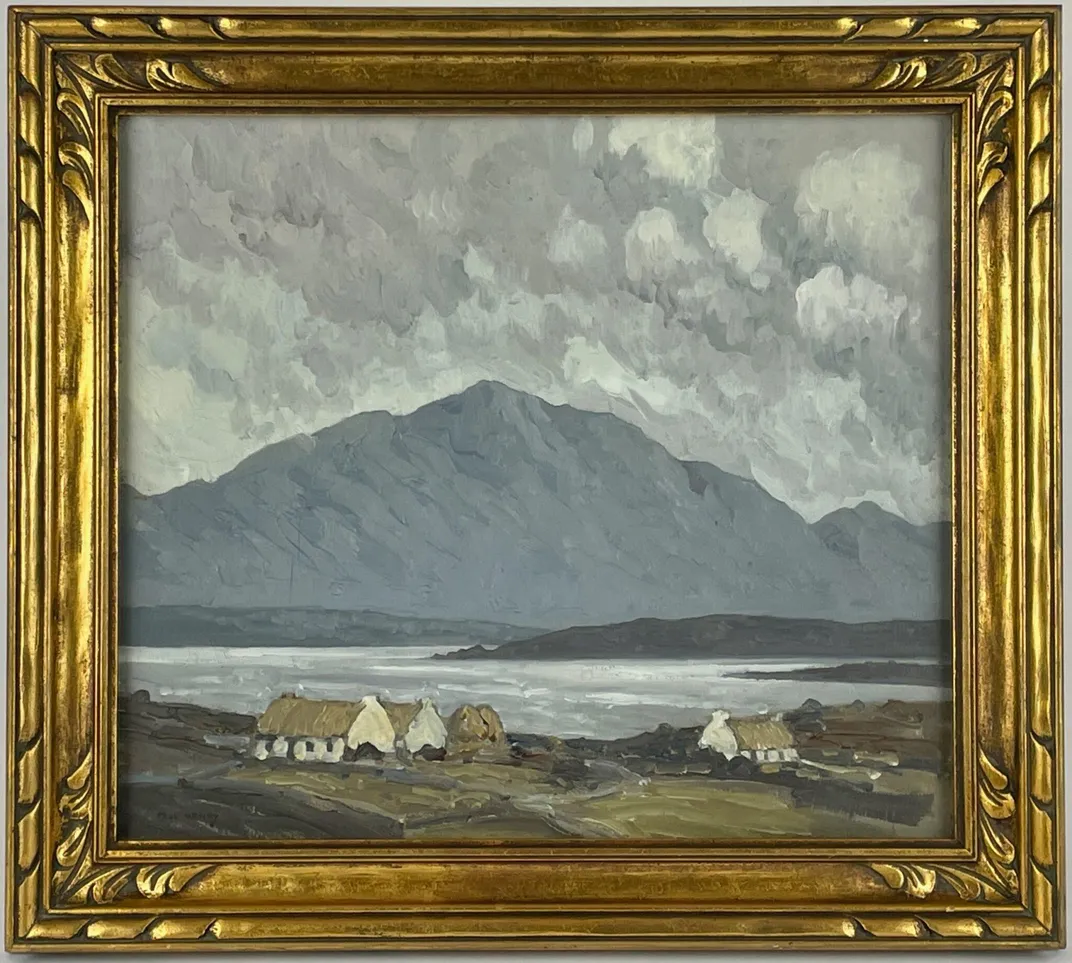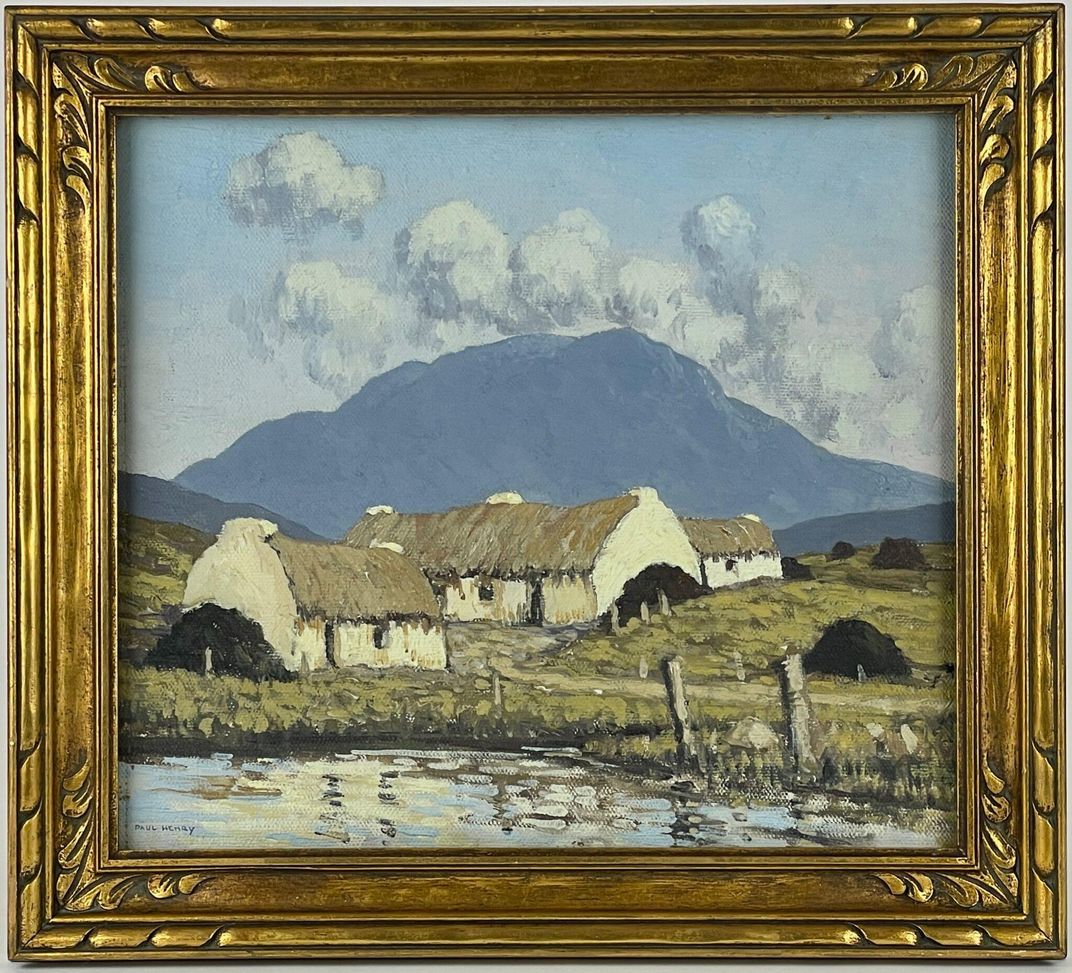Rare Impressionist Landscapes Found in Storage Unit Could Sell for $60,000
Created by artist Paul Henry, the oil paintings depict the Irish countryside
:focal(400x358:401x359)/https://tf-cmsv2-smithsonianmag-media.s3.amazonaws.com/filer/89/62/896273eb-e1d8-4ba3-984c-e20a7ee61464/landscapppe.jpg)
An Ohio man preparing to sell his parents’ art collection recently discovered a forgotten pair of paintings in the back of an old storage unit. The family had long thought that the landscapes were just inexpensive prints, but appraisers have now identified them as oil paintings by Irish Impressionist Paul Henry.
As Elizabeth Birdthistle reports for the Irish Times, the newly authenticated artworks will go on auction at Cincinnati-based Caza Sikes on September 8. Each carries an estimate of $60,000 to $80,000.
“[T]hey were the last two items out of the storage unit and [the seller] commented that they were worth nothing,” Will Sikes, a partner at the family-run art company, tells the Times. “We called [him], asked if he was sitting down, and told him what he thought were prints were actually genuine works by a famous Irish artist. He nearly fainted with the news.”
Per a statement, the seller’s great-grandfather, Sir Patrick McGovern, or his grandmother, Mary Geraldine Kane, likely purchased the canvases in the early 20th century, either during a trip to McGovern’s native Ireland or from a dealer in New York. McGovern immigrated to the United States in 1891 and became an engineer, overseeing development of subway routes and aqueducts in Philadelphia, Boston and New York, reports Sarah Cascone for Artnet News.

One of the paintings, In Connemara, depicts a quaint view of the Irish countryside. The 13- by 15-inch landscape shows dark clouds hanging overhead, a blue-gray mountain looming in the distance, and a few white-and-brown cottages nestled near the front of the scene.
The other canvas up for sale, an untitled landscape, appears to show a Connemara cottage in sunnier weather. As Irish Central’s Shane O’Brien points out, the piece is almost identical to the artist’s more famous A Blue Day. According to the lot listing, Henry likely “spent many days/weeks at this location,” creating “multiple works from different vantage points.”
Sikes tells the Times that the paintings “are absolutely pristine as they have been beneath glass since they were purchased and have been in the same family since.”
He adds, “We contacted experts in auction houses and institutions in Dublin and the United States, and it all pointed to the fact that the paintings are genuine.”
Born in Belfast in 1876, Henry began drawing as a young boy and started studying at the Royal Belfast Academical Institution at age 15. According to Artnet, he later moved to France and, in 1898, began working in American painter James Abbott McNeil Whistler’s Paris studio. While living in the French capital, he was influenced by artists including Jean François Millet, Paul Cézanne and Paul Gauguin.

Henry relocated to London in the early 1900s and began exhibiting work in Dublin in 1910. Soon, he became one of Ireland’s most famous artists; collectors gravitated toward his tranquil landscapes of his home country, like the azure vista seen in A Sunny Day, Connemara (1940).
In Henry’s own words, he hoped to capture “the very soul of Ireland” in his paintings.
“[Henry] is the one artist that every single Irish collector must have in their collection,” Sikes tells Artnet News. “He’s held very near and dear by the Irish people for his ability take that point in time and the beautiful countryside and express it through his paintings.”
This isn’t the first time that someone has stumbled across a Henry painting in the U.S. As Birdthistle reported for the Irish Times last April, an art lover spotted Celtic Cross in a West of Ireland Landscape (1929), which had been wrongly attributed to Lough Derg, on sale at a small auction in Pennsylvania. After purchasing the work for $45,000, the buyer took it back to Ireland, where they resold it for a whopping €105,000 (around $120,000).
/https://tf-cmsv2-smithsonianmag-media.s3.amazonaws.com/accounts/headshot/Isis_Davis-Marks_thumbnail.png)
/https://tf-cmsv2-smithsonianmag-media.s3.amazonaws.com/accounts/headshot/Isis_Davis-Marks_thumbnail.png)